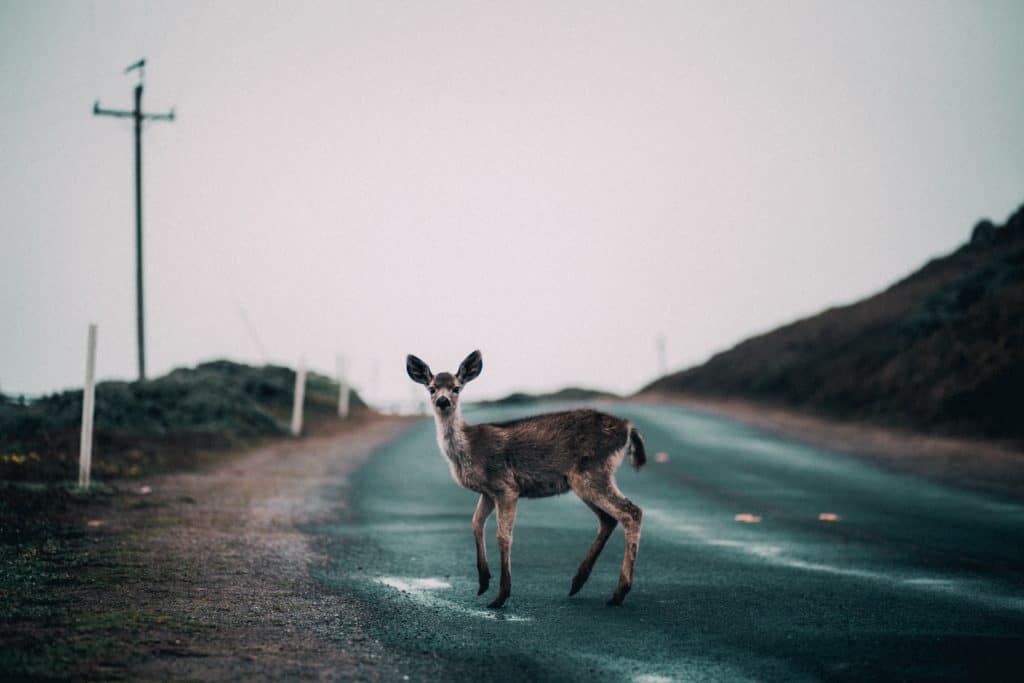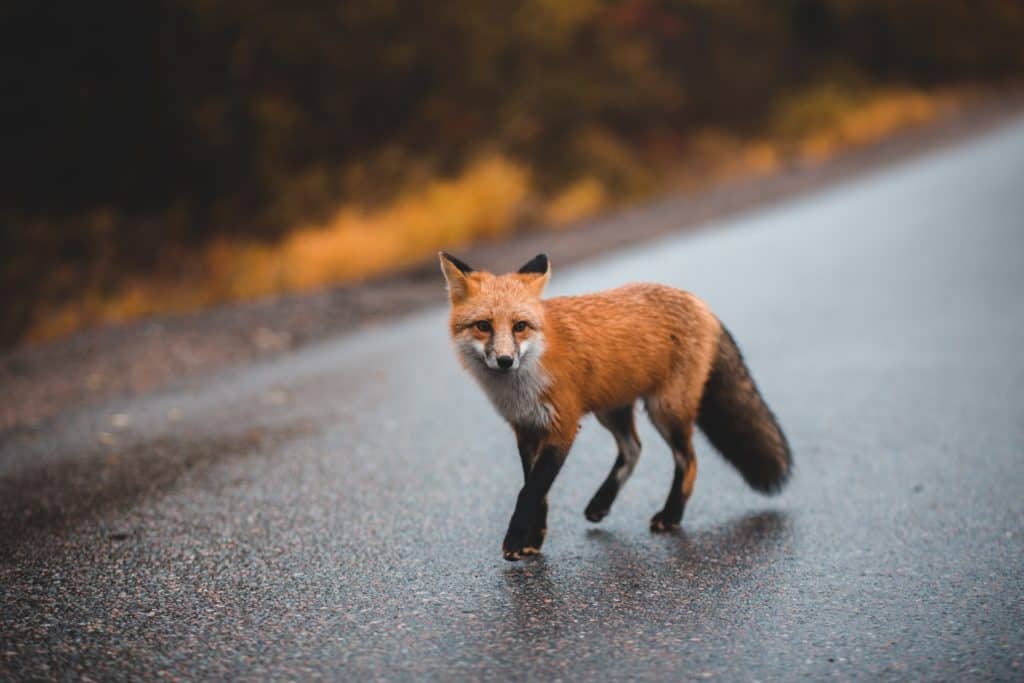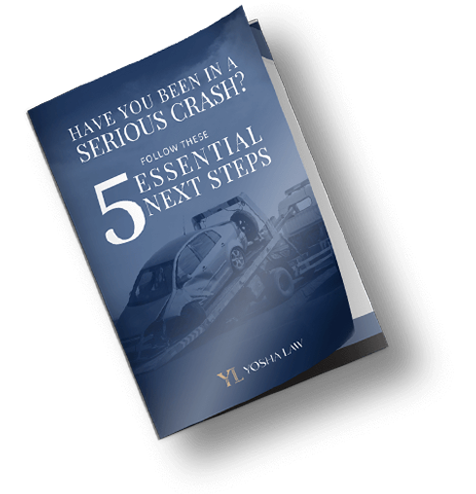Wildlife and vehicle encounters can happen anywhere. As human development takes over forest, mountain, and other wildlands, animals roam into civilization. It’s not uncommon to see deer or foxes crossing the street in almost every region in the United States. We can get lulled into the peace of driving and encounter a raccoon or a stag without any warning. Wildlife accidents are scary, and can have severe consequences. While we’re busy trying to avoid harming the deer or bear in front of our headlights, we can cause grievous injury to ourselves.
How often do wildlife accidents occur? How can we avoid these collisions? What types of injury can occur in a wildlife-vehicle encounter? In this guide, we take a look at the answers, and hopefully provide information to help raise your wildlife awareness while on the road.
It’s not just a rural issue
A 2016 Federal Highway Administration Report found that 80% of all wildlife collisions occur on 2-lane roads–although highways are often three to six lanes, two-lane roads are just as common in suburban areas as in rural, country regions. Almost 90% of these collisions involve a single vehicle, and occur on less-traveled roads.
Each year, a reported 300,000 wildlife accidents occur on U.S. roads–and the same report indicates that wildlife accidents often go unreported. The report also estimates a 50% increase in U.S. wildlife accidents.
Wildlife accidents involving smaller animals like rabbits and possums aren’t likely to lead to major injury–unless a driver swerves to avoid hitting the animals. However, accidents involving bears, cows, elk, mountain lions, and deer often result in vehicle damage and personal injury to vehicle occupants. These animals often die as a result of a vehicle collision, and the survival of their local populations can face severe depletion as a result.
In the western United States, wildlife crossing signs adorn many roads, and certain areas are known for the animal populations that cross their streets and highways. The Colorado Department of Transportation lists the yearly insurance payouts for wildlife accidents at $1.1 billion. However, wildlife accidents occur in every U. S.region–and drivers are often caught by surprise by their animal encounters.
Let’s take a look at some of the most common wildlife encounters with vehicles that lead to injury.
Oh deer! When a deer (or elk or moose) strikes your car
At times, wildlife accidents can leave us with adrenaline coursing through our veins and a good deal of shock, but we emerge with minor vehicle damage and no injuries. Nonetheless, a wildlife encounter can result in injury, and leave us with missed work time, exorbitant medical bills, and lengthy recoveries: Vehicle damage after a wildlife accident can range from minor dents to a total loss.
Deer account for many wildlife accidents in the U.S. An adult male deer can weigh up to 300 lbs, and has a sturdy, strong body. If your vehicle strikes an adult male deer, it can feel like you have struck a cement beam. Here are several deer and elk encounters in the 21st century that led to personal injury:
- In 2016, Buzzfeed.com posted a video of a woman in Howell Township, New Jersey getting attacked by a buck she’d just hit with her car. The young deer tried to work his way into the woman’s SUV. This wildlife accident couldn’t have been avoided as the deer jumped in front of the car before the driver had a chance to react. The woman pulled over to check on the status of the deer, and suffered a knee injury when the deer charged her. In the U.S., deer populations continue to grow and they graze alongside well-traveled suburban roads and highways alike.
According to an article from Arc Solutions, the National Highway Safety Administration estimates 1 million deer wildlife accidents occur each year. These accidents can result in fatalities, with over 200 Americans killed yearly because a deer hit their car. Deer collisions account for 10,000 annual personal injuries to drivers and vehicle occupants, and over $1 billion in vehicle damage.
- In 2011, a family of ten traveling in a minivan struck a deer on the Indiana State Toll Road and, ultimately, hit a tractor-trailer. Seven family members tragically lost their lives, while the other three spent time in the hospital with severe injuries. The family did not see the deer until it was too late.
- In 2021, a 21-year-old driver collided with an elk on I-25 near Castle Pines, Colorado. Unfortunately, the driver’s 18-year-old passenger, Kendra Durnan, was struck by another vehicle after exiting the car to survey the damage.
Deers mate in late fall and tend to dwell closer to civilization during that time. Thus, deer-vehicle collisions tend to increase from October to December. The Insurance Information Institute for Highway Safety reports that the upward trend of deer-vehicle collisions has continued since the mid-1970s. Although late fall still seems to be a period of frequent deer accidents, in 2019, most deer collisions occurred from July to September. As an adult male deer can weigh more than an average human, any buck on vehicle impact can prove disastrous.
At times, these wildlife accidents are unavoidable, but there are steps to take if you are driving in an area with a large deer population:
- Slow Down: Often, roads frequented by deer will have yellow deer crossing signs posted alongside the road. If you see these signs, even if you have yet to see a deer, it’s a good idea to exhibit caution and drive slowly. If a deer darts out in front of your car and you’re driving slowly, you give yourself more time to safely stop your vehicle until the deer passes. Slowing down can mean all of the difference between staying safe and a wildlife accident.
- Look for other deer: Deers don’t often travel alone. If a fawn darts in front of your vehicle, chances are, their parents are nearby too. Even after a deer has safely reached the other side of the road, other deer may follow. Give yourself a moment before driving forward.
- Drive with extreme caution: Ensure you are aware of your surroundings when driving through an area with a large deer population. Pay attention to the sides of the road, and slow down if the road ahead is hidden by curves or foliage.
Smaller wildlife accidents can lead to injuries too
Deer, moose, bear, and mountain lions are wildlife animals with solid body mass. It may seem obvious that collisions with these animals can lead to personal injury. However, wildlife accidents with smaller animals such as foxes, rabbits, possums, coyotes, raccoons, and even squirrels may lead to driver injury as well. Hitting these animals may have an adverse impact on local ecosystems, and swerving to avoid them can cause human injury.
- In 2018, driver Angela Hernandez swerved to avoid hitting a rabbit in Big Sur, California. She overcorrected her Jeep, and plunged off of a two hundred-foot cliff. Hernandez landed on a beach below the highway, and lay undetected, for a week. Hernandez was discovered by a couple hiking the Big Sur coastline. She had suffered grievous injuries including a collapsed lung, broken ribs, and a brain hemorrhage, along with severe dehydration. While Hernandez ultimately survived, she faced a long, uphill recovery process.
- In 2021, in Hingham Massachusetts, a 19-year-old woman swerved to avoid hitting a squirrel and slammed into Abraham Lincoln’s ancestral home instead. While the driver escaped injury, her car was totaled, and the home suffered structural and cosmetic damage.
- In 2017 in Sedgwick, Missouri, an 18-year-old driver suffered serious injuries after trying to avoid an animal.
- In November 2021, a tractor-trailer driver in Lynn, Massachusetts swerved to avoid hitting a raccoon. He crashed into several cars, homes, and a utility pole, and rendered a home uninhabitable.
Can you file a claim after a wildlife encounter?
Wildlife accidents are more common than many realize. From 2018 to 2019, U.S. drivers filed over 1.9 million insurance claims as a result of their wildlife encounter. Many of these encounters involve a single vehicle, but hitting an animal can result in a multi-car pile-up too. So, when can you file an injury claim after striking wildlife with your vehicle?
Typically, a driver is considered liable in these accidents–even if an animal darts out quickly in front of your car. However, some insurance companies may still allow for injury claims. In case of a wildlife accident that leads to injury, there are a few steps to follow. Remembering this checklist may help legitimize your case for compensation:
- File a police report: If you file a report for your accident, you’ve begun a paper record to back up the circumstances of your crash. Police officers can also take statements from any witnesses to the collision.
- Contact your local Wildlife or Animal Control department to ensure proper treatment of the animal. If the animal has died, these departments may be able to determine how your accident occured.
- Immediately seek medical attention: Make sure a doctor examines your injuries. Although your bruised body may seem like a minor inconvenience, a medical doctor can diagnose your injuries and determine their severity.
- File your claim as soon as possible, and if necessary, contact a wildlife accident lawyer. Suppose you need to file a Gary brain hemorrhage lawsuit. In that case, you can count on Gary attorneys and personal injury lawyers in Fort Wayne, for example, to help you out with your filing if you are uncertain about the procedure, your rights as the victim of such an accident, etc. This will get the process of your claim started quickly.
You may be entitled to compensation after a wildlife accident, and proper documentation and collection of evidence can only help your case.
Remember to stay alert on all roads, and watch for signs signifying wildlife crossings. If you find yourself in a wildlife encounter that leads to injury, follow the proper channels toward appropriate compensation.








